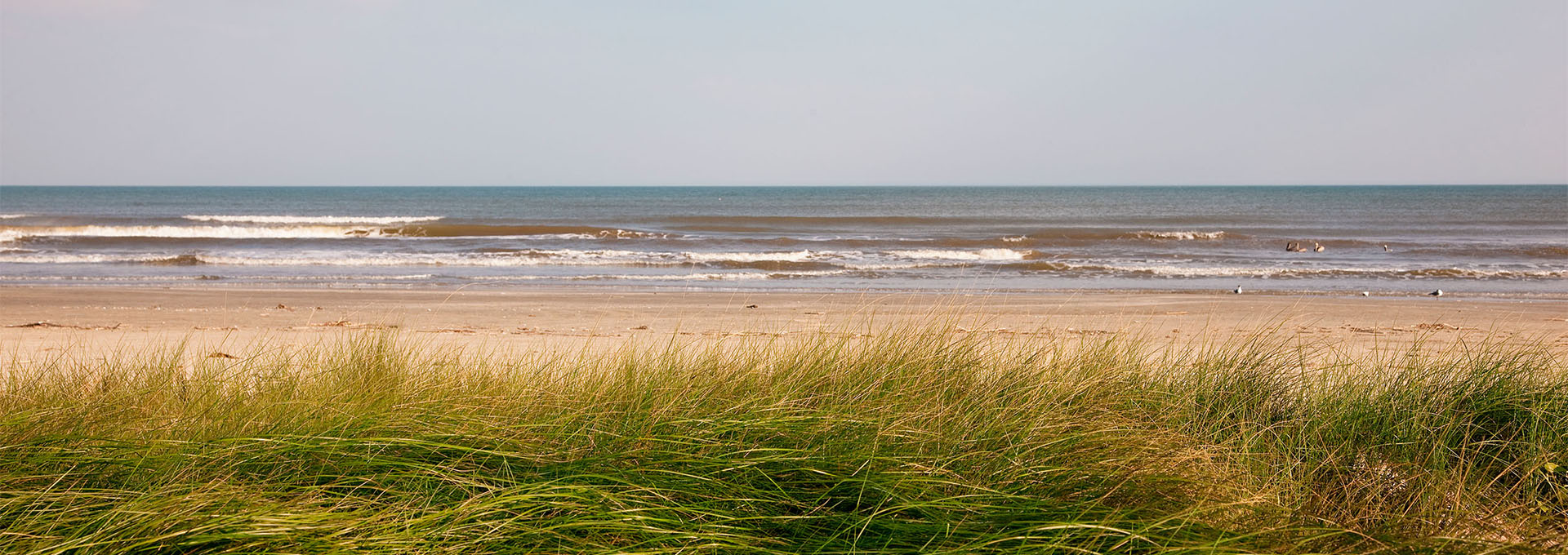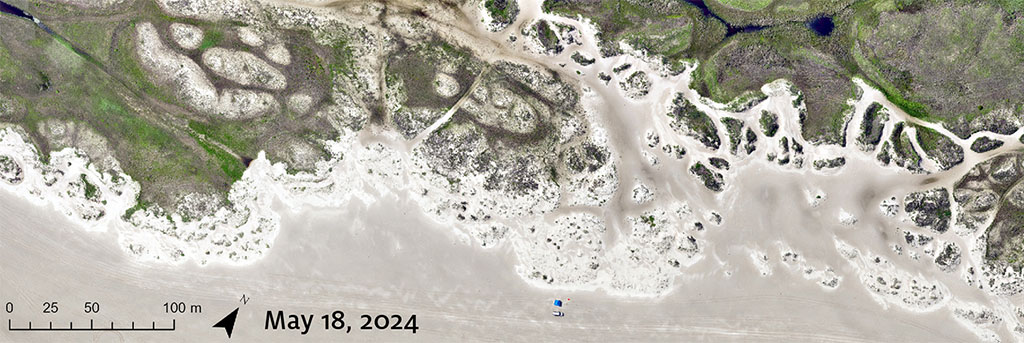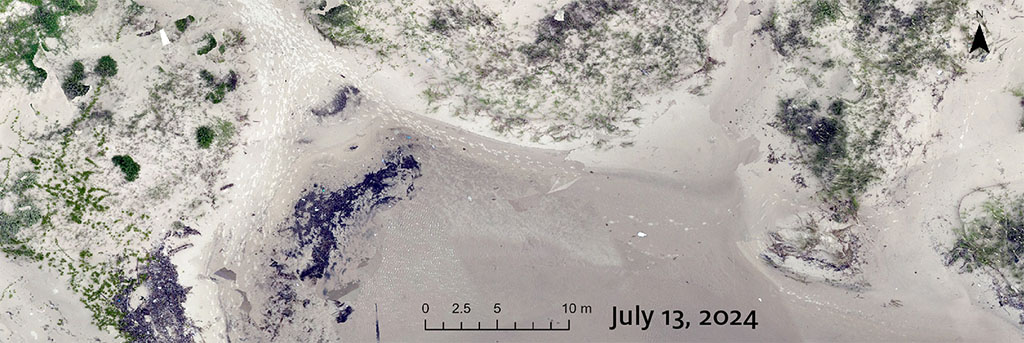Using High-Resolution, Drone-Based Lidar Data, the Team Captured Coastline’s Rapid Transformation from Pre- to Post-Storm
As the clock winds down on a deadly and destructive 2024 hurricane season, a new study from geologists at the University of Houston reveals extensive erosion and shoreline retreat caused by Hurricane Beryl, a category one hurricane that struck the Texas coast this summer.

Utilizing high-resolution, drone-based lidar data collected in May and July, Shuhab Khan, a geology professor in the UH College of Natural Sciences and Mathematics, and his team were able to capture the rapid transformation of the coastline from pre- to post-storm.
“Our data captured the severe impact of Hurricane Beryl on several Texas beaches and dune systems. The visual comparisons between our May and July data are striking and show just how drastically these landscapes changed in matter of months,” Khan said.
The study, funded by the National Oceanic and Atmospheric Administration and the Texas General Land Office, highlights the changes observed at Galveston, Follett's Island, Matagorda, Mustang Island, North Padre Island and Sargent Island, close to where Beryl made landfall.
“Sargent Island experienced the most significant impact and is unrecognizable,” Khan said. “The flooding, overwash and scarping caused by Beryl wiped out nearly all the dunes and left the area virtually inaccessible.”
Follett’s Island was also hit hard.
“Follett’s had a restored dune system, but most of the sand was scraped away leaving behind bare hay bales,” Khan said.
Sargent Island
Drone-based orthomosaic


Images of Sargent Island taken May and July 2024
Follett’s Island
Drone-based orthomosaic


Images of Follett’s Island taken May and July 2024
The findings parallel a previous study by Khan’s team on the coastal impacts of Hurricane Harvey in 2017 that revealed similar, but more significant, changes.
“After Harvey, we found an average shoreline retreat of just over 16 meters, with certain areas near the landfall site in Rockport seeing nearly 60 meters of erosion,” Khan said. “Those values far exceed the average short- and long-term retreat rates of 1.27 meters per year for the Texas coast.”
In addition to documenting the coastal erosion, the team’s research aims to inform future mitigation strategies.
“Our ongoing research demonstrates that restored dunes along the Texas coast are vulnerable to major storms,” Khan said. “It emphasizes the need for adaptive, proactive dune management and regular monitoring to assess the durability of these restoration efforts.”
Galveston Island
Drone-based orthomosaic


Images of Galveston Island taken May and July 2024
Matagorda Island
Drone-based orthomosaic


Images of Matagorda Island taken May and July 2024
And as Texas continues to face natural threats, Khan hopes the study sheds light on the urgent need for innovative solutions to protect vulnerable dunes, wildlife habitats and coastal communities.
“The data we collect helps us quantify erosion, track recovery progress and improve predictive models for storm damage,” Khan said. “Efforts like the ‘Ike Dike’ and dune restoration are critical, but our research shows that some areas remain highly susceptible.”
- Bryan Luhn, University Media Relations